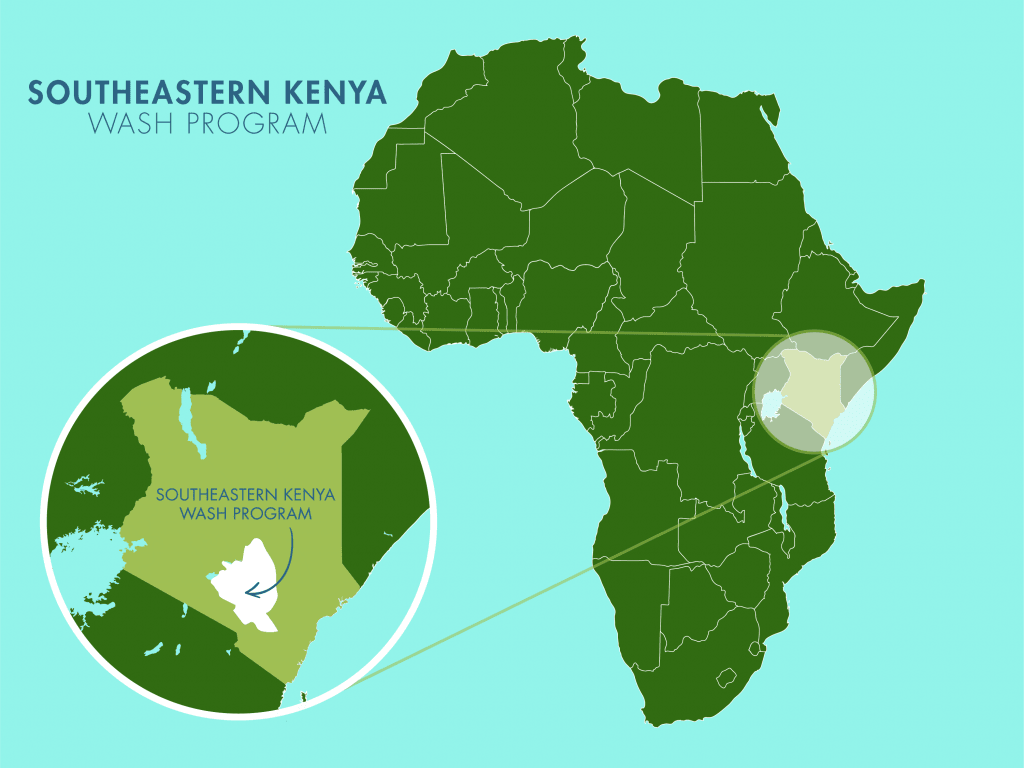In the quiet hills of the Makulini Community, where 400 people live, twelve-year-old Musyoka carries more than a yellow jerrycan each day — he carries the weight of his family’s need for water. Every morning, before the sun grows too hot, Musyoka begins his long journey across steep, rocky ground to reach the nearest scoop hole.

Musyoka lugs his heavy jerrycan home.
"The implemented protected shallow wells and scoop holes are far from my home. The steep and rocky terrain also makes fetching water an uphill and challenging task," shared Musyoka.
What takes him an hour each day isn’t just the walking — it’s the waiting, the climbing, and the exhaustion that follows. Still, Musyoka continues because his family depends on him.

The path to water is long and difficult, but it’s also unsafe.
“I worry about safety because the path to the waterpoint is steep and rocky. Sometimes, I slip, especially when I’m tired or when the sun is too hot. The place is far and lonely, and I get scared when I’m walking alone early in the morning or the evening. The scoop hole water itself is not always clean, and I’ve seen my siblings fall sick after drinking it," Musyoka lamented.
Every trip comes with fear; fear of falling, of walking alone, and of returning home too late or too tired to do much else. Each hour spent fetching water is an hour lost from childhood when Musyoka could be learning, playing, and resting.
“I would spend my time reading, doing my homework, playing with friends, or herding our goats," he said.
The lack of water not only dries the land, but it also drains time and energy from young students like Musyoka, who dream of brighter futures.
“I sometimes get to school late and feel very tired during class. It’s hard to concentrate or do well in exams when I’m not well rested or when my body is aching from carrying water. I also don’t have enough time to revise or do homework because I’m busy helping fetch water," Musyoka continued.
Like many in Makulini, Musyoka has seen water shortages turn routine tasks into day-long struggles.

Musyoka fills a jerrycan from the deep scoop hole.
“There isn’t enough water because many people fetch from the same place, and the water comes out slowly, especially when it hasn’t rained. Sometimes I have to wait for [a] long [time] in line, and when I finally get home, I’m too tired to do anything else. It makes me feel frustrated and sad because it takes up so much of my day," Musyoka said.
Even through hardship, Musyoka’s dreams remain strong. He speaks of his future with hope — a hope that clean, nearby water could help him reach it.
“A new waterpoint that is closer and safer would change a lot for me. I wouldn’t have to walk for hours just to get water. It would save my energy and time, and I wouldn’t be scared walking long distances alone. I’d also feel better knowing the water is clean and that I won’t get sick from drinking it," he said.
And when asked about what he wants to become, his answer comes without hesitation: “I want to become a doctor in the future. I know I have to study hard, and that’s why I wish I had more time and energy to focus on school.”
Every day, when Musyoka is sent to fetch water, he feels the strain before the journey even begins.
“When I’m sent to fetch water, I feel tired even before I start because I know it will take a long time and I won’t have time to read or play. But I don’t complain, because I know my family needs it, but it’s really hard," Musyoka said.
Musyoka’s words remind us that access to safe, reliable water is more than a necessity — it’s a chance for a child to learn, to rest, and to dream. In Makulini, that dream is within reach.

Solving the water crisis in this community will require a multifaceted system that will work together to create a sustainable water source that will serve this community for years to come.
Note: Our proposed water point can only serve 300 people per day. We are working with the community to identify other water solutions that will ensure everyone has access to safe and reliable drinking water.
Steps Toward a Solution
Our technical experts worked with the local community to identify the most effective solution to their water crisis. Together, they decided to construct a protected dug well and sand dam.
Protected Dug Well Near A Sand Dam
Once a sand dam is installed and has time to mature by gathering sand and silt, groundwater increases significantly in the entire area surrounding the project. This provides a reliable source of groundwater that wasn’t possible before. As a result, wells can be constructed to take advantage of the water stored and filtered in the collected sand.
During the construction of the protected dug well, we will build a platform for the well and attach a hand pump. The community will gain a safe, enclosed water source capable of providing approximately five gallons of water per minute.
This protected dug well will be connected to a sand dam to obtain water.
Community Education & Ownership
Hygiene and sanitation training are integral to our water projects. Training is tailored to each community's specific needs and includes key topics such as proper water handling, improved hygiene practices, disease transmission prevention, and care of the new water point. Safe water and improved hygiene habits foster a healthier future for everyone in the community.
Encouraged and supported by our team's guidance, the community elects a water user committee representative of its diverse members. This committee assumes responsibility for maintaining the water point, organizing community efforts, and gathering fees to ensure its upkeep.

 Protected Dug Well
Protected Dug Well
 Rehabilitation Project
Rehabilitation Project


















